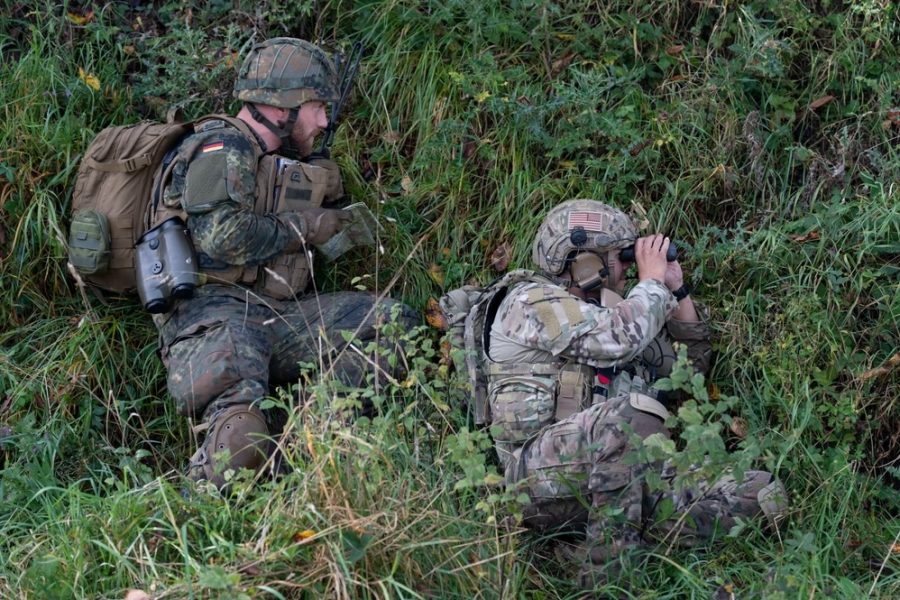The Air Force plans to shutter several units dedicated to training foreign militaries in a bid to save money amid shifting priorities across the Defense Department.
Proposed cuts identified in the service’s fiscal 2026 budget request would hit seven squadrons and foreign military education programs on multiple continents that have fostered international partnerships for decades.
The plan is part of the Air Force’s response to Defense Secretary Pete Hegseth’s February directive to cut 8 percent of the Pentagon’s budget for “nonlethal programs” and instead funnel that money into new weapons programs, Maj. Gen. John Klein, the Air Force’s assistant deputy chief of staff for operations, told Air & Space Forces Magazine in an Aug. 29 email.
“The USAF made tough choices to eliminate specific units to free resources for critical readiness and modernization investments while balancing strategic objectives and available resources,” Klein said. “We are still committed to engaging with our partner nations to improve airpower capabilities that support [National Defense Strategy] priorities and ensure all of our allies and partners are well integrated.”
Former members of the units, however, warn the closures could be a step backward amid the U.S. military’s wider efforts to strengthen ties with partners and allies as a hedge against growing influence from rivals Russia and China.
“China is just salivating at opportunities like this, as are the Russians,” said Phil Morrison, a retired colonel who commanded air advisors as head of the 621st Air Mobility Advisory Group. “We should be pumping money into this enterprise, not pulling it away.”
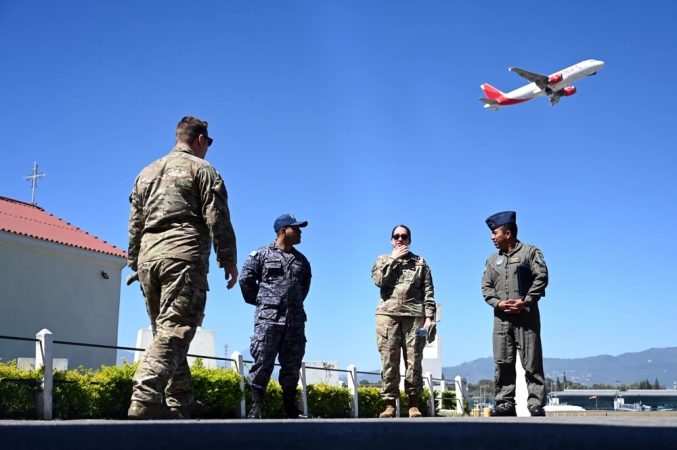
Organizations on the chopping block include:
- The 571st and 818th Mobility Support Advisory Squadrons at Travis Air Force Base, Calif., and Joint Base McGuire-Dix-Lakehurst, N.J., respectively. The squadrons’ goal is to strengthen U.S. ties with partners and allies by advising and training their air forces.
- The 637th International Support Squadron, which manages English-language training for foreign troops at Joint Base San Antonio, Texas
- The Aviation Leadership Program at Columbus Air Force Base, Miss. ALP is an undergraduate pilot training program for foreign students. The program includes English language training and studying U.S. democratic institutions and ideals.
- The Inter-European Air Forces Academy at Kapaun Air Station, Germany. IEAFA provides professional military education and technical training courses for more than 300 international officers and non-commissioned officers every year in leadership, aviation safety, and air base defense, among other topics.
- The 4th Combat Training Squadron at Einsiedlerhof Air Station, Germany. The 4th CTS provides Joint Terminal Attack Controller training for U.S., allied, and partner troops. JTACs are ground troops trained to call in airstrikes.
- U.S. Air Forces in Europe and Air Forces Africa’s Combat Training School, also at Einsiedlerhof. The school provides integrated air and missile defense training for partners and allies.
Closing the units would save nearly $8 million by cutting pay for 65 full-time civilian jobs to “meet DOD overall funding reductions,” according to Air Force request documents. Congress would need to sign off on the changes for them to take effect.
Members of the security assistance community who spoke to Air & Space Forces Magazine argue it’s a small price to pay for programs with an outsized benefit to the U.S. military.
“At the end of the day, for me, this is a big force multiplier, and it comes at a pretty low cost,” said a former official with the 637th International Support Squadron, who spoke on the condition of anonymity because they were not cleared to speak with the press.
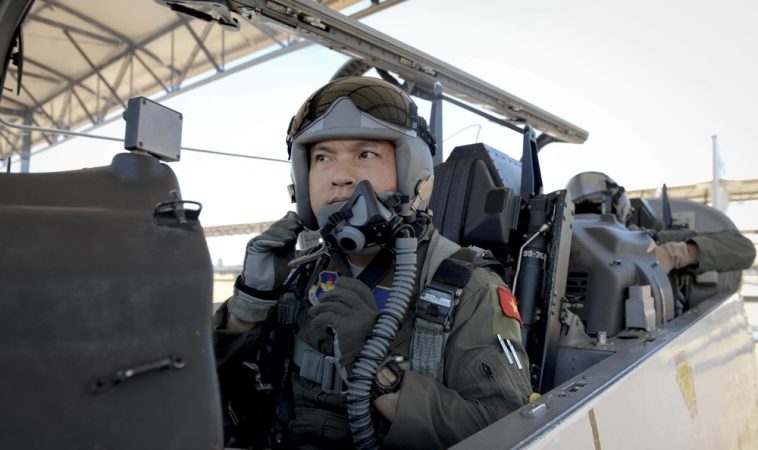
A spokesperson for the 37th Wing, which oversees the 637th ISS, referred questions about the proposed closure to Headquarters Air Force.
The Air Force is still hashing out the details of how it would wind down each organization. For instance, the 4th CTS and Combat Training School will shut down by the end of 2025, said Lt. Col. Erika Yepsen, a spokesperson for USAFE-AFAFRICA.
Eliminating the units would disperse hundreds of troops to other squadrons across the Air Force. But Klein stressed that the Air Force was not eliminating its operational advising capability overall.
“The Air Staff is analyzing how to get the most of these capabilities in support of current priorities,” said Klein, who previously oversaw the service’s air advisor units as commander of the Air Force Expeditionary Center. For air advisors in particular, he said, “we are shifting from a dedicated model … within the [mobility support advisory squadrons] to one where they use their expertise while embedded in units across the USAF.”
“Our partnerships remain central to operations around the globe, and we will continue to maintain the air advising capability and expertise through this change,” he said.
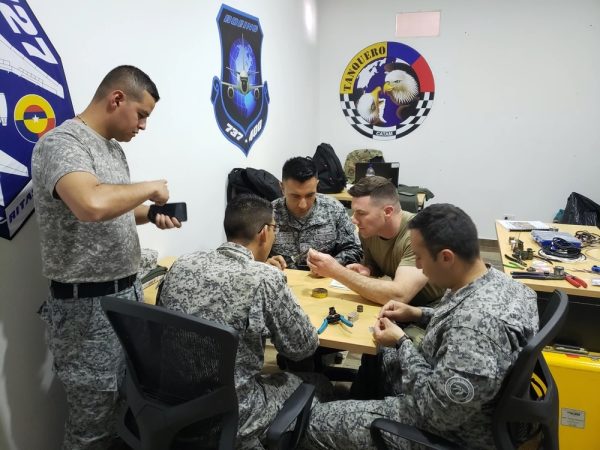
‘Ready-Made Relationships’
For years, top U.S. military officials have lauded international partnerships as a means of covering more territory in the global power competition with China, Russia, and non-state extremist groups. But whether that tradition continues under the Trump administration, which has withdrawn from so-called “soft power” programs abroad as part of its “America First” mission, remains to be seen.
The 571st MSAS focuses on Central and South America, and the 818th on Africa, though both squadrons can be deployed worldwide. China is heavily invested in expanding its influence in those regions; Russia continues to grow its footprint in Africa as well.
Mobility support advisory squadrons send small teams, usually composed of fewer than a dozen Airmen, to train foreign partners in air operations skills from command and control and aircraft maintenance to combat casualty care and cargo operations.
Proponents say that support can improve security in a host nation in ways that ultimately safeguard the U.S. as well. For instance, in Honduras, where much of the landscape is inaccessible by road, effective use of airpower allows local authorities to curb safe havens for drug traffickers.
But the key benefit, air advisors say, is building relationships between the Air Force and foreign partners, which could prove invaluable if the Air Force is ever scrambling to find a friendly airfield overseas, a former MSAS official explained.
“Let’s say something kicked off, and we found ourselves in that region,” said Morrison, who oversaw the mobility support advisory squadrons as a group commander from 2020 to 2022. “We have ready-made relationships, we have air advisors who know the key players there, and we can leverage that to get access to runways, to ramps.
“A small country might not be able to afford C-17s or C-130s,” he added, “but if they have some equipment, some asphalt we can land an airplane on, that goes a long way.”
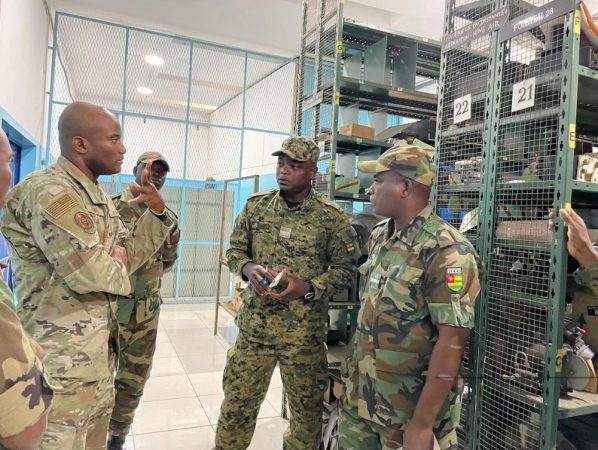
Retired Gen. Jeffrey Harrigian saw the benefit of MSAS work during his tours commanding U.S. Air Forces in Europe-Air Forces Africa and Air Forces Central. Air advisors helped build connections with foreign partners to enable anything from an emergency landing spot to a pit stop for gas.
“Having those relationships grown through the tactical level, where the MSAS is engaging, helps us with access basing and overflight, which is so critically important for us as a nation,” he said.
Air advisors can also act as eyes and ears, as their on-the-ground familiarity with far-flung airfields help U.S. planners build operations.
“In most cases, they’ll be the first to help us understand what type of airframe can go into those locations,” Harrigian said. “They’ll be able to feed that back into the broader Air Mobility Command process: ‘Hey, this is C-130 capable, and oh, by the way, we’re going to need to help them with air traffic control.’ Those can be game-changers for our ability to execute the plan.”
Such expertise is important as the Air Force pursues agile combat employment, a vision of faster, lighter deployments that relies on bare-bones airfields around the world. And it could mean sending fewer American troops into harm’s way when air advisors have already trained local troops to use a Halvorsen Loader for cargo, for example.
In that sense, the squadrons have been the most forward element of the Global Air Mobility Support System—the broad term for the Air Force’s ability to turn almost any airfield in the world into a logistics hub for the rest of the military.
“Logistics wins wars, and logistics requires the GAMSS, or you’re not going to be able to land places,” Morrison said. “Right at the very tip of that spear of GAMSS [are] the air advisors.”
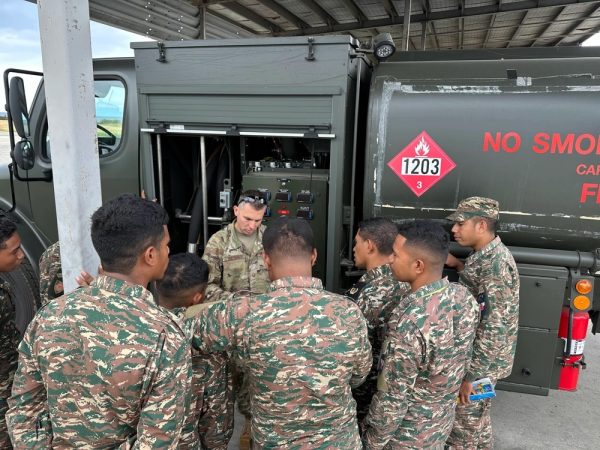
Klein emphasized that the air advisor mission will continue as the 160 or so members of the two squadrons bring those skills to other units. Most graduates of the Expeditionary Center’s air advisor school, which trains Airmen from various specialties to train and equip foreign troops on top of their regular job, are already spread across the service rather than falling under an MSAS.
“The capability of our Airmen is not going away, and we will continue leveraging their talent and expertise in the future,” Klein said.
Three other squadrons in the 621st Air Mobility Advisory Group—the 321st and 621st Air Mobility Operations Squadrons and the 621st Mobility Support Operations Squadron—could take on some of the air advising role, Klein added. However, those units don’t specialize in air advising, and Morrison said the MSAS provides the structure and coordination to make the mission successful.
Growing the Global Coalition
While air advisors train troops on their home turf, foreign students head to Texas to study at the U.S. military’s Defense Language Institute English Language Center.
The 637th ISS acts as the center’s operational arm, managing the care and feeding of some 3,000 international students from more than 120 countries who attend the program each year. There, troops learn to speak the complex language of air operations in English over a matter of weeks before moving on to pilot training or other programs at bases across the U.S.
Like the mobility support advisory squadrons, the school bolsters the international coalition of U.S.-aligned air forces so that American troops can better work with foreign partners.
Combatant commanders “want us to be able to talk together, work together, exercise together, fight together, debrief together, learn lessons together,” the former ISS official said. “Unless AI can replace the whole language gap, you’ve got to have people that can talk to each other.”
On that front, the program offers a major advantage over Chinese and Russian efforts to win allies: English is more widely spoken and easier to learn.
“I think English has a long, long head start on them,” the former ISS official said, “but if we start to slow down, then they’ll catch up.”
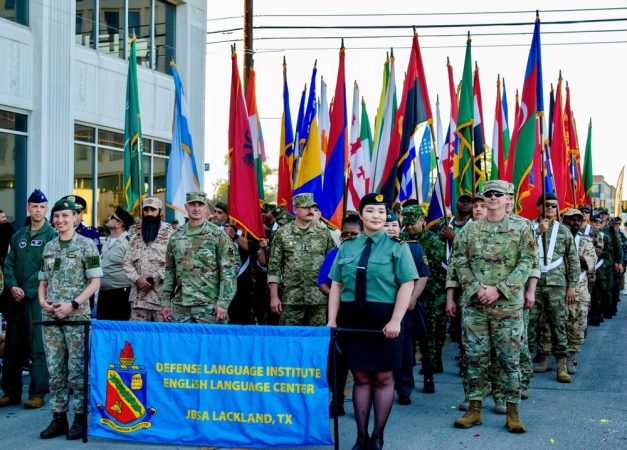
The former ISS official also called the school the “engine” of foreign military sales because it gives international troops the language skills they need to operate advanced American weapons. FMS sales totaled $118 billion in fiscal 2024, up 45 percent from the year before.
It’s possible that the 100 or so ISS employees could be rolled into the 332nd Training Squadron, which designs the center’s curriculum, the former official said. Yet changing how the center operates could carry impacts for the English-language training, in turn affecting how quickly foreign students get up to speed on U.S. military equipment and joint air operations.
When it comes to shrinking the program, “I think we’d be shooting ourselves in the foot,” the former official said.
In a similar vein, Harrigian spoke highly of the Inter-European Air Forces Academy and the 4th Combat Training Squadron. Academy graduates often go on to serve at the highest levels of their nation’s militaries, while the 4th CTS helps partners and allies understand how to integrate air and ground operations, which helps their own security enterprise and helps them operate with Americans.
“The return on investment is tremendous,” he said.
‘Budget Dust’
Because the programs are small compared to other Air Force missions and are often misunderstood, they have become an easier target for budget cuts, former officials said.
The 571st and 818th MSAS operate on “budget dust,” Morrison said, estimating it costs about $1 million per year to run each squadron. The former ISS official said that squadron has a similarly negligible price tag, since much of the center’s work is paid for by foreign governments.
The long-term nature of building partnerships, where gains are difficult to quantify and may not be visible until crisis erupts, makes the squadrons low-hanging fruit for leaders looking for short-term savings. Morrison likened the mission to building a cathedral.
“They chip away at something they may never fully see come to fruition during their tenure,” he said. “That day you need that cathedral, it will be because people in the MSAS five, 10, 15 years ago started building it.”
The Air Force isn’t the only military branch looking to shrink its security assistance footprint. Earlier this year, the Army said it planned to shutter two of its six Security Force Assistance Brigades, which were activated in the late 2010s to advise friendly ground forces.
Should these programs be eliminated, the strategic impact may not be apparent for some time.
“It’s not an immediate payback,” the former ISS official said about the school.
